I have mentioned this time and time again, but I feel I need to say it yet again, reading is very important to me, and having my children develop a love of reading is a huge goal. Reading is something that goes on around here multiple times a day. We have story time in the morning after our Bible time. The children read books independently throughout the day. We finish our day with a bedtime reading time. I'm thrilled to see that this "love of reading" goal is on its way to being met. However, beyond enjoying what they are reading, I want them to really comprehend what they are reading. This is why I am thankful when we are given opportunities to review awesome products like the Charlotte's Web E-Guide from Progeny Press.
Progeny Press, owned by Michael and Rebecca Gilleland, publishes E-Guides and Study Guides for 4 different grade level groups: Lower Elementary, Upper Elementary, Middle School and High School. These study guides are designed to help children examine quality literature from a Christian Perspective. A few years ago, we had the pleasure of reviewing the Progeny Press Study Guide for Frog and Toad Together. That guide was one of Progeny Press's Lower Elementary guides.
I thought it would be fun to try out a different guide, now that the girls are old enough for an older level. The girls are in 4th and 5th grade, so just the right age for the Upper Elementary guides. Charlotte's Web has always been a favorite book of mine, so I was thrilled to get a chance to read it with the children.
So, what exactly did we receive?
We received the Charlotte's Web E-Guide, which is a downloadable PDF file of the study guide, plus a downloadable PDF of the Answer Key. The E-Guide is different than the regular study guide in that it is interactive and you can either work directly on the guide while on the computer, or print the guide out and complete it with pen or pencil. The actual book was not provided, which was not a problem as we have a copy at home, plus it is easy to find at the library. I actually took out a copy for each of the girls, so they could read it independently.
Additionally, it is recommended that you have a good dictionary, a thesaurus, a Bible, and possibly a topical Bible or concordance. While we do have a children's dictionary, we don't have any other dictionaries. However, we were able to use both an online dictionary and thesaurus to help complete some of the assignments. We did not find a need for the topical Bible or a concordance yet, though we are only part way through the guide. Needless to say, we have multiple Bibles in the house, so that requirement was not a problem.
Let me tell you more about the E-Guide!
The study guide itself is 51 pages long. You will find the following sections:
- Note to Instructor
- Synopsis
- About the Author
- About the Illustrator
- Ideas for Pre-reading Activities
- The actual Study Guide question/activity portion divided into six sections
- An Overview or Summary section
- Ideas for Post-reading Activities
- Additional Resources
The Note to Instructor gives the parent instructions on how to use the study guide, along with a list of needed materials and general information to get the most out of the study guide. The next three sections are self-explanatory. I enjoyed reading the information about the author and illustrator, but that wasn't information I shared with the children.
In the Ideas for Pre-reading Activities section you will find a few ideas for activities to start while reading the book, before getting into the guide. It is recommended to have the child read the book all the way through before starting on the guide, and these activities can be done during that time.
Each section of the question portion of the study guide focuses on 3-4 chapters of the book, and is supposed to take a week to complete. All in all, it should take between 8-10 weeks to complete the guide. This includes the reading of the book, the six sections of questions, plus the overview section. Of course, if you have slower readers or need to take a longer amount of time on the questions, you may need a little extra time.
The Post-reading Activities include a couple of art projects and a letter writing suggestion. The study guide concludes with a one page list of additional resources, including different books and movies.
What kinds of questions are the children being asked?
Each section of the Study Guide has the child working on vocabulary, plus has them answer questions about the story. There are three types of questions.
- Questions: Asks simple, literal questions that can easily be answered by reading the story.
- Thinking About the Story: Asks the child to think a little harder about details and look at the Hows, Whys, and Whats regarding what is happening in the story. Sometimes Bible verses are read to help make the point.
- Dig Deeper: These questions ask the child to dig even deeper and at times personalize the questions. It is in this section that the majority of the Bible verses are used.
A closer look at vocabulary:
Each section has the child work on vocabulary in a different manner. The following two screenshots show two of the ways.
Choosing the correct word or phrase to help define the underlined word:
Writing down the definition:
Other ways vocabulary is worked on are: writing synonyms, choosing a word that comes closest to the meaning, trying to figure out the meaning of the words in context and then checking the actual definition in the dictionary, and selecting the correct word from a word box to answer the question "Which word or phrase... ."
Here are a couple of screenshots that show some examples of the different kinds of questions.
In addition to the vocabulary and three types of questions that are in each section, there are different literary aspects that the children are exposed to, a different one per section. They will work on descriptive writing, writing assignments, characters, fact & opinion, and mood.
At the bottom of this page there is an example of a writing assignment:
I love how the interactive guide has the drop down menu in this assignment on characters.
The screenshots above are taken from the interactive study guide which has been opened using Adobe Acrobat Reader. This is the only way that the child can actually fill in their answers on the computer and have them saved. When opened in Google Chrome, I was able to fill in the answers, but they couldn't be saved. And when I opened the guide in Microsoft Edge I wasn't even able to fill in answers. However, it was this version that I actually printed out for the girls.
There are no blue boxes which was handy for a couple of reasons. One, I didn't have to use my colored ink. And two, the children were able to use the entire area to write their answers. This was a huge benefit, as I know they wouldn't always have been able to fit their answers in the blue box.
As I had both girls working on their lessons at the same time, it wouldn't have really worked for them to use the interactive aspect of the guide. I love that I was still able to print out the pages for them to use.
Their study guides are kept in their binders:
I print out the pages for each section at the beginning of the week.
Here are a few samples of the girls' completed pages.
I have the girls work on as much independently as they can. At the beginning of the review period they read the book through, as recommended in the Note to Instructor section. We also took out some books about spiders from the library. When both girls were finished, which did take a little over a week, we started using the guide.
I read the section's required chapters aloud to all the children. Then Tabitha and Amelia were to work on their vocabulary and the easy questions as best as they could. I will say, there were times when they needed my help even with the vocabulary. Sometimes the words they needed to look up were not the easiest to find a good definition for, such as "laying" and "pitch." It's not that they couldn't find definitions. They just couldn't find the correct definition that fit with the way it was used in the sentences from the book. I do believe part of the reason for this is that the book was written in the early 50's and we don't use those expressions anymore.
The "Thinking About the Story" and "Dig Deeper" questions were definitely ones where the girls needed guidance.
I did appreciate that I had an answer key at my disposal. When even I couldn't find an answer, I turned to the answer key.
We are about halfway through the guide. When we started this review, we were still on our summer break, so we didn't use the guide each day of the week, so it was taking awhile to get each section completed. I also wasn't aware the recommendation was going to be to read the book in its entirety before starting the guide. If I had been aware of this, I would have had the children reading the book earlier. I had assumed we were going to read a section at a time, and then work on the guide before moving on.
I was a little surprised that the only activities are done before starting the guide, and at the end. When we worked on Frog and Toad Together, there were hands-on activities in the lessons to help reinforce the story. Even though the children are older now, I know they would have enjoyed such projects as a part of the lessons. After all, we are all about hands-on activities in our homeschool.
That said, I really am appreciating the way the questions are helping the girls dig deeper into the book. They are also learning that they don't have to always think the same way, and will have different insights into the ideas presented. Of course, there will be times there are correct answers, especially when using the Bible to delve into the answers. For instance, even though all of God's creation has value, the Bible tells us that man is above the animals. Amelia was having different thoughts about this, and though I understood what she was saying, I had to explain what God's word was saying. It's not that animals aren't important to God. In fact, the Bible tells us we are to care for the animals. However, that doesn't negate the fact that humans were given dominion.
The Charlotte's Web E-Guide sure has gotten us thinking beyond what we would have if we were just reading the book.
As I mentioned above, Progeny Press has E-Guides and Study Guides for different levels. Click on the banner below to read reviews for guides from each level.
























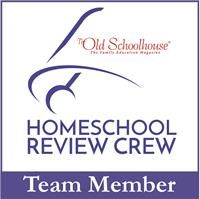
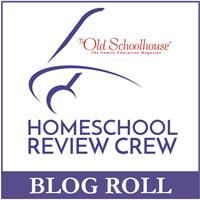














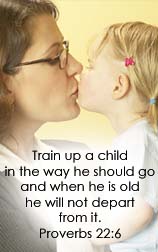



![[PREMIO2009.png]](https://blogger.googleusercontent.com/img/b/R29vZ2xl/AVvXsEjXD_Gx-wZ9EM5hXKrEYLksEBkYfRQtmb8VDVTDG_yyLggQoFIstZsh4zszdG20KqErZicRzEhiNYLty7j3IMXJYsABqkXjr8pp-ncj71xCbpxlXGbGpZq2fTuDQqq1RMKV4DPcDBnBViA/s1600/PREMIO2009.png)
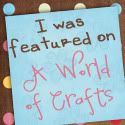
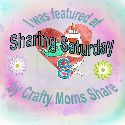


No comments:
Post a Comment
Thank you for visiting my blog today. I love to read your comments, so please leave me one if you have the time.
Blessings